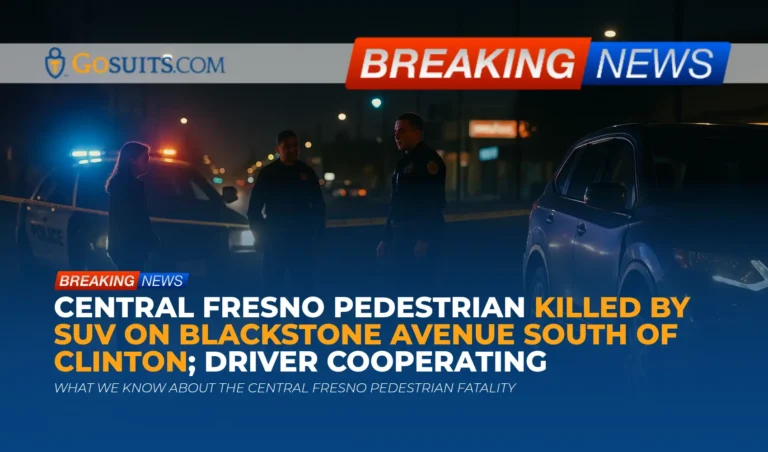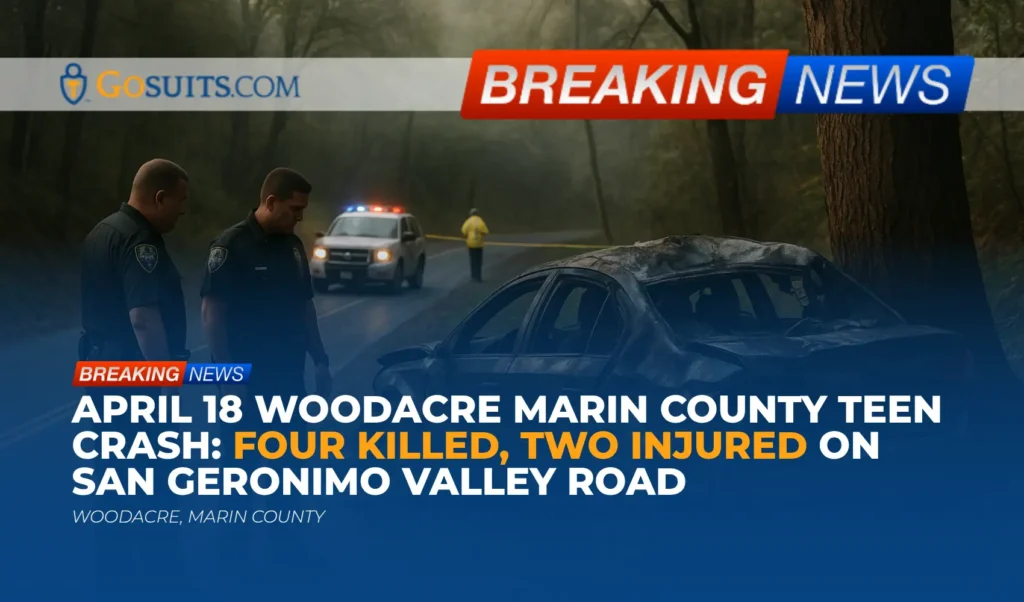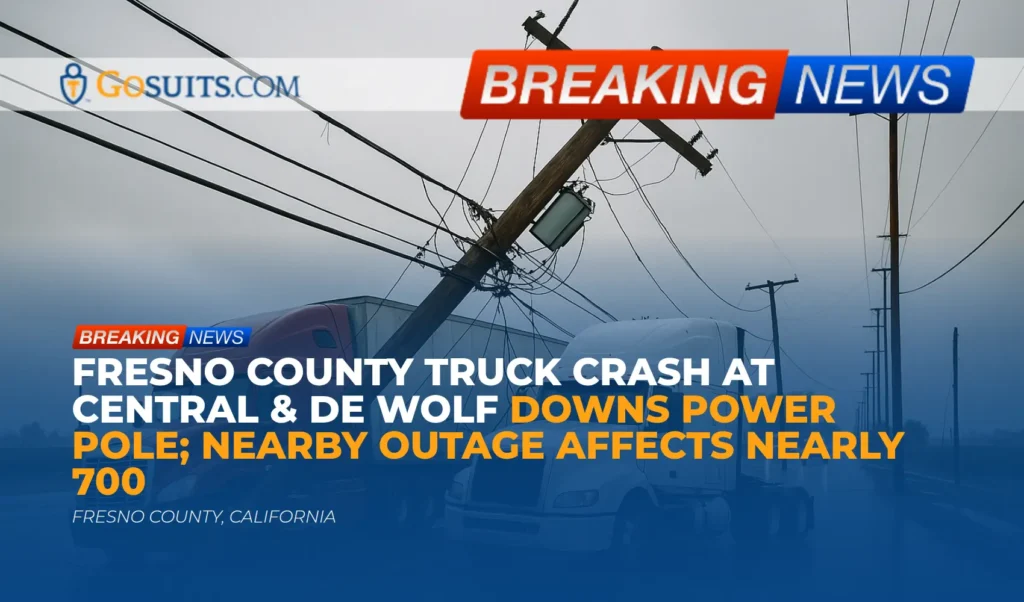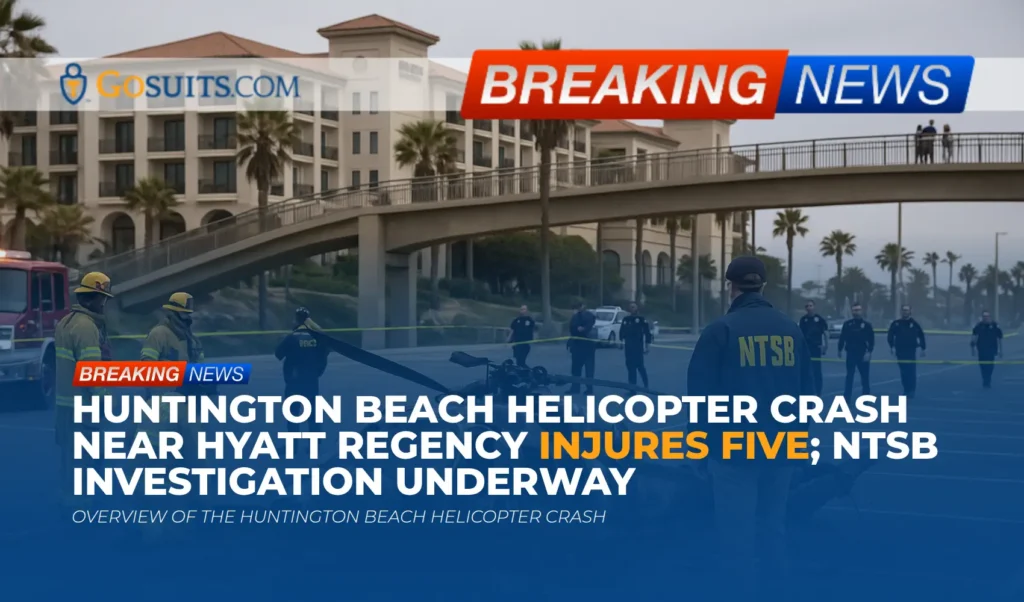- What We Know About the Central Fresno Pedestrian Fatality
- Location Context: Blackstone Avenue South of Clinton Avenue
- Pedestrian Collisions After Dark: Visibility and Risk
- California Rules That Often Apply in Vehicle vs. Pedestrian Cases
- Key Civil Liability Questions Investigators Commonly Examine
- How Families Can Obtain Official Records and Information
- Insurance and Claim Pathways After a Fatal Pedestrian Crash
- Time Limits and Notice Requirements in California
- Practical Steps to Preserve Evidence
- Safety Reminders for Our Community
- Commentary from Gosuits Fresno, California Personal Injury Attorney
- Why Taking Action Matters Now
What We Know About the Central Fresno Pedestrian Fatality
Police report that a man in his 60s was struck and killed by an SUV in central Fresno. The collision occurred after 7 p.m. on a Sunday evening on Blackstone Avenue, south of Clinton Avenue. According to initial statements, the man was crossing eastbound on Blackstone and was not in a crosswalk when he entered the northbound lanes and was hit. He was pronounced deceased at the scene. The driver, described as a woman in her 40s, stayed at the location and is cooperating with investigators. Police noted there were no signs of driver intoxication at the time of the initial response.
At this stage, law enforcement has indicated an ongoing investigation. That process typically includes documenting the scene, taking measurements, interviewing witnesses, evaluating roadway lighting and sight lines, and reviewing any available video from nearby businesses or traffic cameras. Early reports help the public understand what happened, but they are not a final determination of civil fault or legal responsibility.
Location Context: Blackstone Avenue South of Clinton Avenue
Blackstone Avenue is a major north-south arterial in Fresno that carries steady traffic through a mix of commercial and residential areas. Evening traffic can include commuters, shoppers, and local residents. After sunset, visibility for both drivers and pedestrians becomes more challenging, especially in busy corridors with multiple driveways, bus stops, and midblock activity. Whether crosswalks are available nearby, whether street lighting is adequate, and whether parked vehicles or landscaping may have affected sight distance are all typical questions in a corridor like this.
Because this crash occurred after dark and outside a crosswalk, it raises familiar safety issues: how well drivers can see a person crossing midblock at night, whether the pedestrian could reasonably expect a gap in traffic, whether there were safe crossing alternatives within a practical distance, and whether prevailing traffic speeds gave drivers and the pedestrian enough time to react. These are factual matters that investigators and, later, insurers and civil courts often examine carefully.
Pedestrian Collisions After Dark: Visibility and Risk
National safety agencies consistently report that most pedestrian fatalities occur during hours of darkness and frequently outside of intersections. Reduced visibility, higher nighttime traffic speeds, and the absence of marked crossing facilities at midblock locations all contribute to increased risk.
Key context from government sources includes:
- Nighttime risk is high. The National Highway Traffic Safety Administration notes that a large share of pedestrian fatalities happen after dark, when drivers have less time to detect and respond to people on foot. See NHTSA’s pedestrian safety overview at nhtsa.gov.
- Crossing location matters. Many pedestrian deaths occur at nonintersection locations. This underscores the importance of safe crossing opportunities and driver caution in areas where people may cross midblock. NHTSA provides broad national trends in its pedestrian safety materials at nhtsa.gov.
- Injuries are severe. The Centers for Disease Control and Prevention emphasizes the high severity of pedestrian collisions and offers prevention guidance for both drivers and pedestrians. See CDC’s pedestrian safety resources at cdc.gov.
In a corridor like Blackstone Avenue, ambient lighting, reflective materials, vehicle headlight use, and prevailing speeds can all influence visibility and stopping distance. Even at lawful speeds, drivers need time and space to perceive and brake. Whether the pedestrian wore reflective clothing or whether nearby lighting illuminated the crossing path may also be assessed in reconstructing what happened.
California Rules That Often Apply in Vehicle vs. Pedestrian Cases
California law imposes duties on both drivers and pedestrians. The application of these rules depends on the specific facts of a crash, but the following provisions commonly arise in civil evaluations:
- Driver duty to yield in crosswalks. Under California Vehicle Code section 21950, drivers must yield the right-of-way to a pedestrian crossing within a marked crosswalk or within an unmarked crosswalk at an intersection. The statute also directs pedestrians to exercise due care for their safety. Read the text at leginfo.legislature.ca.gov.
- Pedestrians crossing outside crosswalks. California Vehicle Code section 21954 provides that a pedestrian crossing a roadway at any place other than a crosswalk must yield the right-of-way to vehicles that are close enough to constitute an immediate hazard. Importantly, the law still requires drivers to exercise due care to avoid colliding with a pedestrian. See leginfo.legislature.ca.gov.
- Basic speed law. California Vehicle Code section 22350 prohibits driving faster than is reasonable or prudent, considering visibility, traffic, and the surface and width of the roadway. Even when under the posted limit, a driver can be unsafe if conditions call for slower speeds. Read more at leginfo.legislature.ca.gov.
- Headlights during darkness. California Vehicle Code section 24250 requires vehicles to be equipped with lighted lighting equipment during darkness. Proper headlamp use is a factor in night visibility. See leginfo.legislature.ca.gov.
California also applies comparative fault in civil cases, which means responsibility can be shared among the parties based on their respective percentages of fault. The California Courts Self-Help Guide offers a plain-language overview of negligence concepts at selfhelp.courts.ca.gov.
Finally, California’s laws governing wrongful death and survival actions outline who may bring civil claims and what damages may be recoverable, discussed further below with statutory references.
Key Civil Liability Questions Investigators Commonly Examine
While the early report notes that the pedestrian was not in a crosswalk and that the driver showed no signs of intoxication, civil liability assessments typically require a fuller picture. Investigators, insurers, and attorneys often consider the following:
- Visibility and lighting. Was the area adequately lit for drivers to perceive a person crossing midblock in time to brake safely? Were streetlights functioning, and were there shadows or glare affecting visibility?
- Driver behavior. Was the driver traveling at a speed reasonable for the conditions under the basic speed law? Was the driver attentive and using headlights as required? Was there any distraction in the vehicle?
- Pedestrian decision-making. Did the pedestrian have sufficient time to cross safely based on the distance and speed of approaching vehicles? Were there nearby crosswalks within a practical distance, and if so, were they reasonably accessible?
- Roadway design and environment. Are there longstanding safety issues at the location, such as inadequate lighting, missing crosswalks, high speeds, or complex driveways that create conflict points? If a dangerous roadway condition contributed, potential public entity liability may be evaluated under Government Code section 835. See leginfo.legislature.ca.gov.
- Vehicle condition. Were headlights, brakes, and tires functioning as intended?
- Video and witnesses. Do nearby businesses, transit agencies, or residences have cameras that captured the incident or the moments leading up to it? Did any witnesses observe vehicle speed, driver behavior, or pedestrian actions?
Answers to these questions inform the civil evaluation of fault and liability. A police report helps establish a baseline, but it is not the final word in a civil claim. Additional evidence can refine or change the understanding of what occurred.
How Families Can Obtain Official Records and Information
In the wake of a fatal crash, families often need documentation. The following sources are commonly relevant in Fresno:
Police Traffic Collision Report
The Fresno Police Department prepares the traffic collision report. Eligible parties can typically request a copy through the department’s records process. For department contact information and online services, visit the Fresno Police Department’s official page at fresno.gov. Be prepared to provide the date, approximate time, location, and, if known, the report number.
Note that collision reports are generally available only to involved parties, their legal representatives, and insurers. Processing times vary. The report often includes diagrams, witness statements, and preliminary findings.
Coroner and Autopsy Information
In Fresno County, the Coroner conducts investigations into unattended or sudden deaths. Next of kin may request information regarding the cause and manner of death. The Fresno County government site provides department directories and instructions for county services at fresnocountyca.gov. Families can use that portal to locate the appropriate office for coroner records and procedures.
Availability of specific coroner documents can depend on the status of the investigation. Some materials may be restricted until the investigation is complete, but next of kin can typically obtain official confirmation of death and findings once available.
Death Certificate
Certified copies of the death certificate are needed for estate matters, insurance, and other administrative processes. In California, death certificates are issued by county offices. The California Department of Public Health explains how to obtain a certified death certificate at cdph.ca.gov. For local issuance, the Fresno County government site at fresnocountyca.gov provides links to the appropriate county office handling vital records.

DMV Accident Reporting
California requires drivers to submit a Report of Traffic Accident Occurring in California, known as the SR-1, to the Department of Motor Vehicles within 10 days for collisions involving injury or death. Details and the form are available at the DMV’s page here: dmv.ca.gov. This obligation is separate from insurance reporting.
Public Records and Video
Some intersections and corridors may have city traffic cameras or nearby public agency cameras. Requests for public records can be made under the California Public Records Act, although not all video is retained, and release may be limited. The City of Fresno’s website at fresno.gov includes information on submitting public records requests. Nearby private cameras, such as those at businesses, are not subject to public records laws, but courteous and timely requests sometimes secure helpful footage before it is overwritten.
Insurance and Claim Pathways After a Fatal Pedestrian Crash
When a motor vehicle collides with a pedestrian, several insurance coverages may be implicated. The details depend on policy language and facts, but these are common avenues:
- Driver’s liability coverage. If the driver is found civilly responsible for the crash, their auto liability insurance is the primary source for injury and wrongful death claims. California law sets minimum limits, but many policies carry higher limits.
- Wrongful death claim. California’s wrongful death statute (Code of Civil Procedure section 377.60) allows certain family members to bring a civil claim for losses such as financial support the decedent would have provided, and loss of love, companionship, and guidance. See the statute at leginfo.legislature.ca.gov.
- Survival action. A survival action under Code of Civil Procedure section 377.30 allows the decedent’s estate to pursue claims the person could have brought if they had survived, such as certain economic losses between injury and death. See leginfo.legislature.ca.gov.
- Uninsured and underinsured motorist coverage. If the at-fault driver has no insurance or too little insurance, a pedestrian may have coverage through their own auto policy’s UM or UIM provisions. This can apply even though the pedestrian was not in a vehicle. Policy details control how these claims work.
- Medical payments and other benefits. Some policies include medical payments coverage that can help with immediate expenses regardless of fault. Life insurance and employer benefits may also provide assistance in fatal cases.
Before speaking with any insurance representative, it is prudent to consult a qualified attorney for a free consultation to understand rights and obligations. What a person says to an insurer can be recorded and used to evaluate or dispute a claim later. An early, informed strategy helps avoid unintentional statements that can be taken out of context.
Time Limits and Notice Requirements in California
California law imposes strict deadlines for civil claims. Missing a deadline can limit or bar recovery, so tracking these time frames is important:
- General statute of limitations for wrongful death. In most cases, wrongful death claims must be filed within two years of the date of death. See Code of Civil Procedure section 335.1 at leginfo.legislature.ca.gov.
- Claims involving public entities. If a claim may involve a public entity, such as a city or county, due to an alleged dangerous condition of public property, a government claim is generally required within six months under Government Code section 911.2. See leginfo.legislature.ca.gov. Substantive liability for a dangerous condition is governed by Government Code section 835 at leginfo.legislature.ca.gov.
- Insurance notice provisions. Insurance policies often require prompt notice of a claim. Review policy language carefully and consider seeking legal guidance before making recorded statements.
The above deadlines are general rules and may be subject to exceptions or additional requirements, especially for minors or when the defendant is a public entity. This is general information intended for education.
Practical Steps to Preserve Evidence
Gathering and preserving evidence early can be crucial in understanding how a collision occurred. Consider the following steps, keeping in mind that every situation is unique and sensitive:
- Secure the police report. Request the Fresno Police Department collision report once available through the agency’s records process at fresno.gov.
- Identify and contact witnesses. If the names or numbers of witnesses are known, note them promptly. Witness accounts fade with time, and contact information can change.
- Request nearby video quickly. Many businesses overwrite video in a matter of days. A polite and timely request may preserve footage. Where appropriate, a formal preservation letter can be sent.
- Photograph the area. Document the roadway, nearby lighting, signage, and any obstructions at a similar time of day. Photos and videos can help show visibility conditions.
- Preserve personal items. Clothing, footwear, and carry items can matter in reconstruction and should be kept in their current condition.
- Be cautious with insurance communications. Before making recorded statements to any insurer, consult with an attorney. Statements can be used later to limit or dispute a claim.
- Track expenses and impacts. Keep records of funeral and memorial costs, travel, time away from work, and other expenses.
These actions are intended to assist in fact-finding and should be tailored to the circumstances. Families coping with loss should feel empowered to ask for help with these tasks.
Safety Reminders for Our Community
Every life lost on our roads is a tragedy. While investigations proceed, it is appropriate to reflect on safety practices that protect people walking and driving along Fresno’s busy corridors.
- For drivers. Slow down at night, use headlights properly, scan for pedestrians near bus stops and midblock locations, and be prepared for someone to cross unexpectedly. The basic speed law requires speeds that are reasonable and prudent for actual conditions, even if below the posted limit. See California Vehicle Code section 22350 at leginfo.legislature.ca.gov.
- For pedestrians. When possible, cross at intersections or marked crosswalks and increase visibility with light-colored or reflective clothing and a flashlight or phone light at night. Wait for a sufficient gap in traffic before crossing midblock. The CDC provides safety tips at cdc.gov.
- For roadway planners. Lighting, safe crossing opportunities, traffic calming, and access management can reduce conflicts. The California Office of Traffic Safety offers statewide pedestrian safety information at ots.ca.gov.
These reminders are not about assigning blame. They are about making sure everyone gets home safely.
Commentary from Gosuits Fresno, California Personal Injury Attorney
Our hearts go out to those affected by this fatal pedestrian collision in central Fresno. Losing a loved one so suddenly is devastating. This article is offered for educational purposes and general information, with care for the community’s need to understand what steps may come next.
Based on the initial report, key questions remain about visibility, speed, lighting, and the availability of safe crossing options along Blackstone Avenue. Even when a person crosses outside a crosswalk, California law places continuing duties on drivers to exercise due care to avoid a collision. A thorough, independent review often looks at camera footage, witness statements, and the physical conditions at the scene. Sometimes these details can clarify or reshape initial impressions from the night of the crash.
In the civil process, insurance carriers and large entities typically move quickly to frame the narrative and assess exposure. They may request recorded statements, highlight selective facts, or rely heavily on initial police notes. People unfamiliar with these processes may feel pressured to answer questions before a full picture is available. That imbalance can affect how liability is evaluated and how losses are measured.
Speaking with a seasoned attorney early helps level the playing field. A free consultation allows families to understand their rights, the kinds of evidence that matter most, and the timelines that apply, before talking to insurers. It also helps ensure that communications are thoughtful and accurate. This empowers informed choices during a difficult time.

Why Taking Action Matters Now
Several time-sensitive considerations can affect the outcome of any civil claim or insurance process after a fatal pedestrian collision. The following steps explain what should be done, why it matters, and the urgency involved:
- Request and review the police report as soon as it is available. The report anchors facts like location, time, and witness information. Early access allows for timely corrections if any details are incomplete or inaccurate. Reports can take days or weeks, so submitting a request promptly helps reduce delays.
- Preserve nearby video and evidence without delay. Many surveillance systems overwrite footage within days. Acting quickly to request copies or place preservation notices increases the chance that critical video and data are not lost.
- Document the scene under similar lighting conditions. Nighttime visibility is central to many pedestrian cases. Photographs and video captured at the same time of day help show what drivers and pedestrians could realistically see. Waiting too long may mean lighting configurations or seasonal conditions change.
- Collect and organize expense records from the outset. Funeral costs, travel, and related expenses accumulate quickly. Keeping receipts and notes in one place supports accurate, timely claims for reimbursement where appropriate.
- Consult an attorney before engaging with insurers. Insurance representatives often ask for statements early. What is said can be used later in the evaluation process. A preliminary legal consultation provides clarity on rights and obligations, and can help shape careful, factual communications.
- Calendar the legal deadlines that may apply. California sets a two-year statute of limitations for wrongful death in most cases, and a six-month claim deadline if a public entity may be involved. Tracking these dates from the beginning prevents last-minute pressure and protects the ability to seek civil remedies.
- Consider roadway safety implications for the community. If conditions at the site contributed to the crash, documenting those conditions now supports broader safety improvements. Timely reporting to appropriate agencies can help prevent future harm.
Taking these steps promptly helps preserve clarity about what happened and supports informed decision-making. It also provides space to navigate administrative tasks with care, rather than urgency, during a difficult and emotional period.
References
- National Highway Traffic Safety Administration: Pedestrian Safety
- Centers for Disease Control and Prevention: Pedestrian Safety
- California Office of Traffic Safety: Pedestrians
- California Vehicle Code § 21950
- California Vehicle Code § 21954
- California Vehicle Code § 22350
- California Vehicle Code § 24250
- California Courts Self-Help: Personal Injury
- Code of Civil Procedure § 377.60
- Code of Civil Procedure § 377.30
- Code of Civil Procedure § 335.1
- Government Code § 835
- Government Code § 911.2
- California DMV: SR-1 Accident Reporting
- Fresno Police Department
- Fresno County Government






